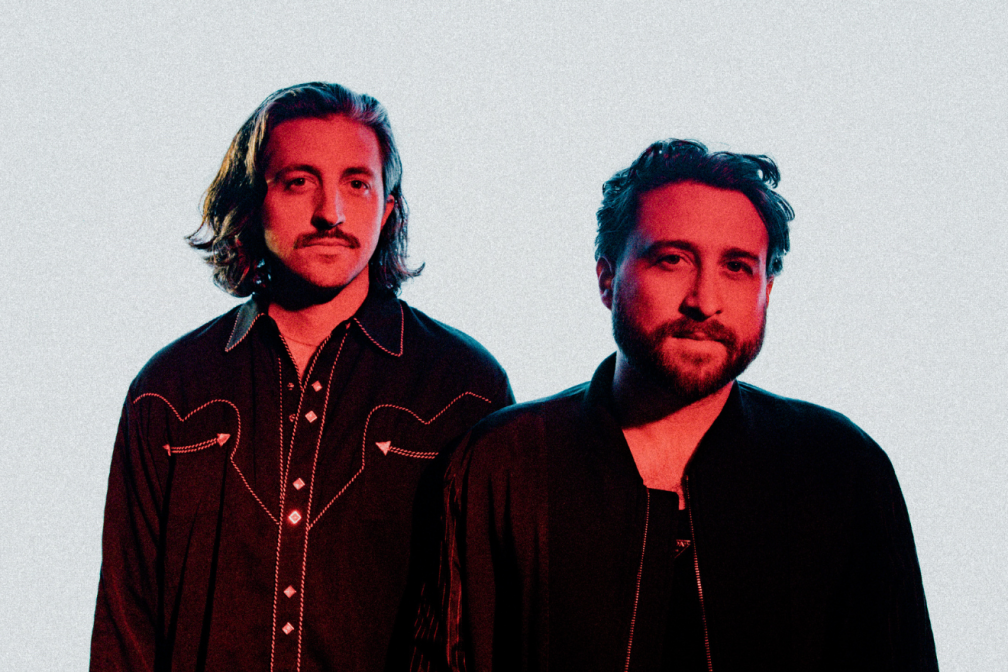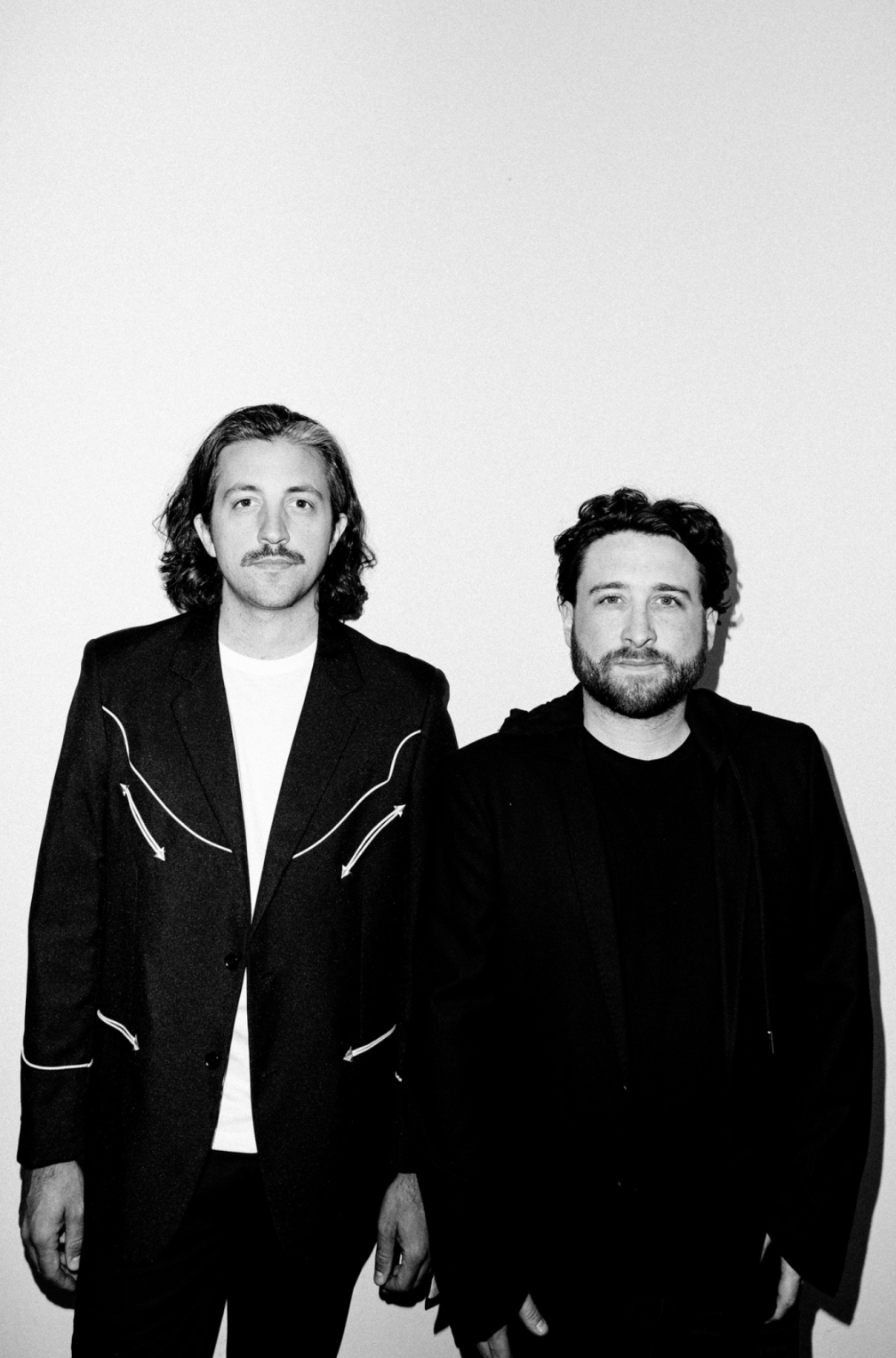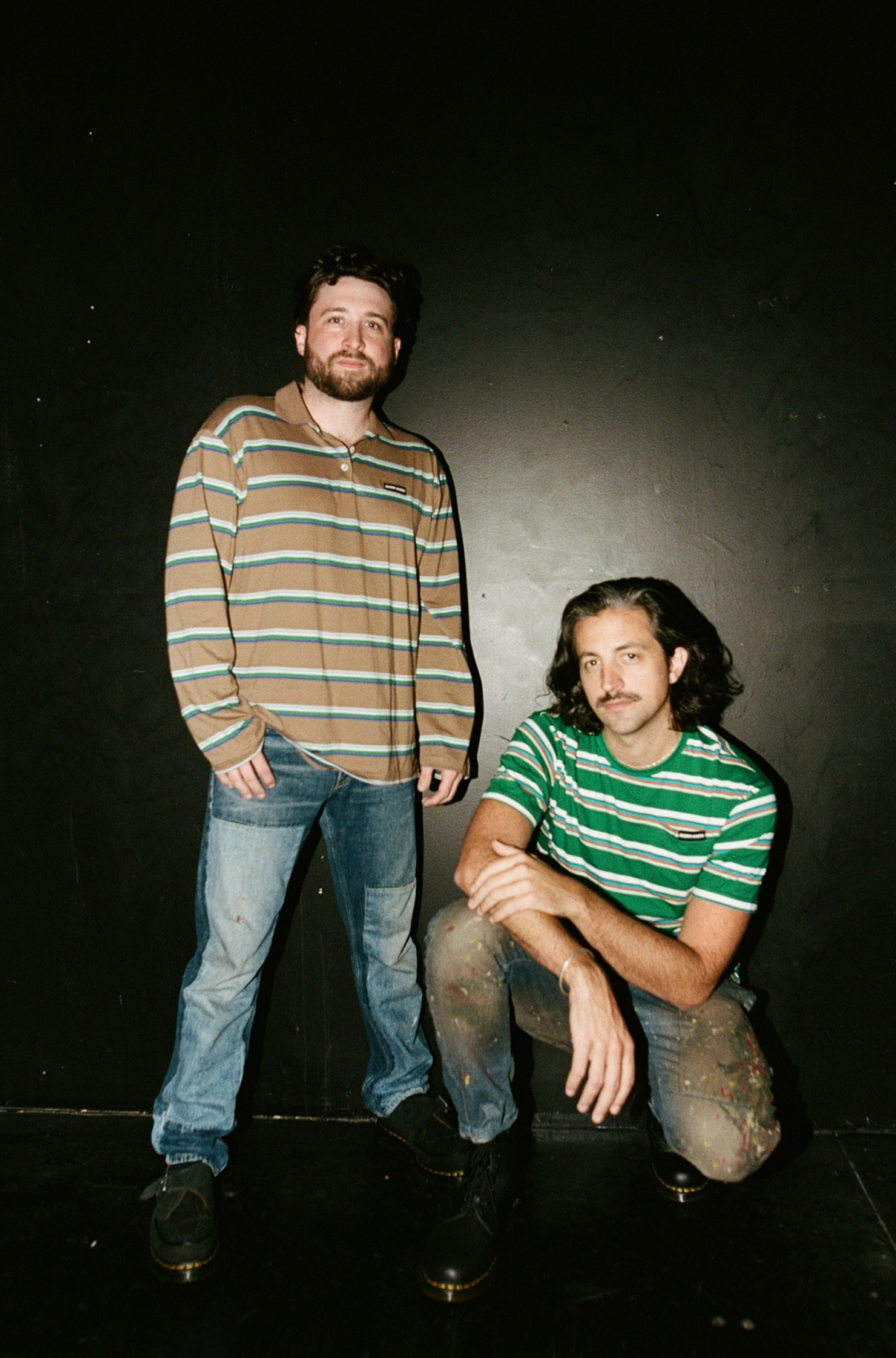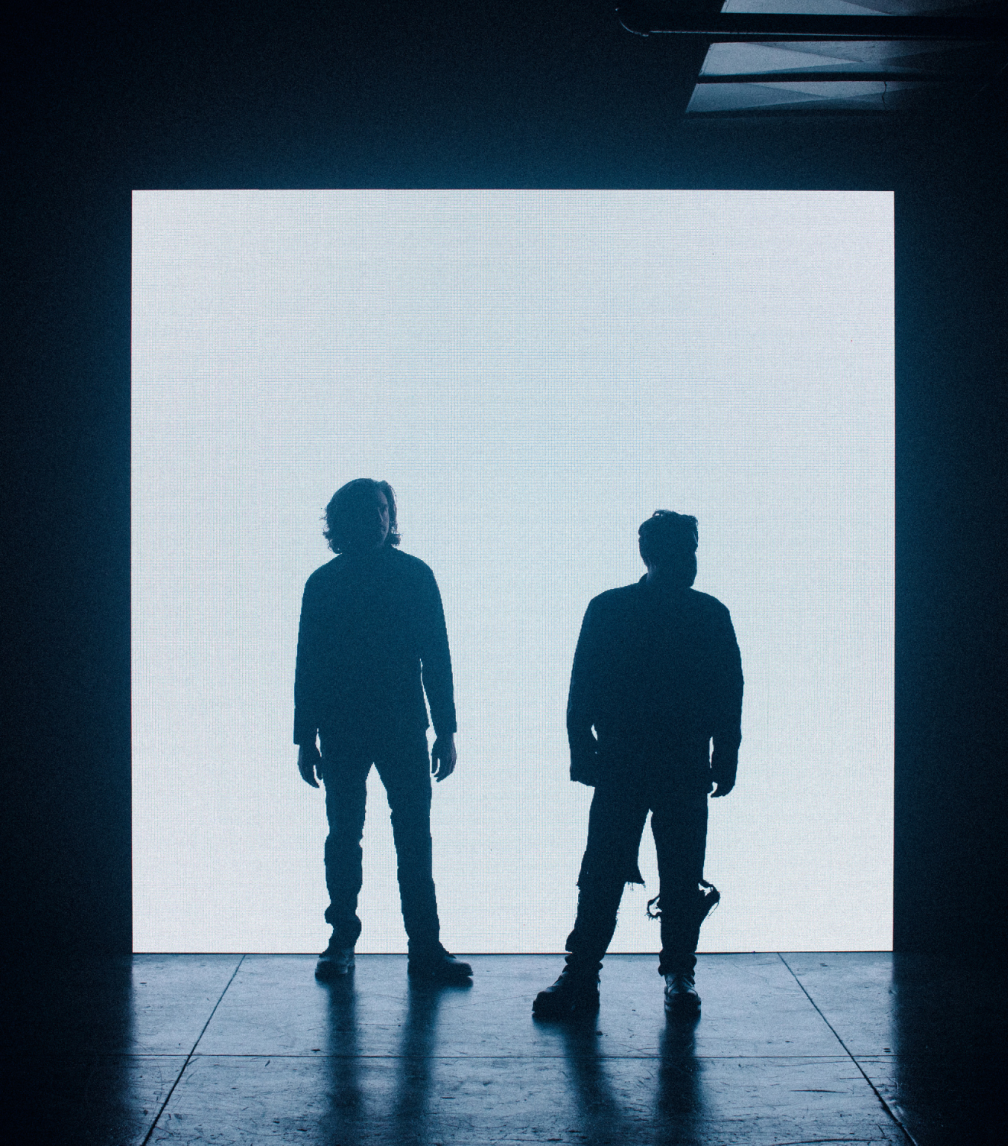 Interviews
Interviews
Electronic duo Phantoms releases 'Perpetual Motion', revisiting their musical roots
The artists share their creative process with the public in an exclusive interview
When electronic duo Phantoms decided to revisit their musical roots, they didn't just look back—they reimagined their foundation through a contemporary lens.
Kyle Kaplan and Vinnie Pergola's new EP 'Perpetual Motion' on Foreign Family Collective marks a triumphant return to the indie dance and electro sounds that first inspired their journey, while pushing forward into new sonic territory.
As they merge blog house nostalgia with modern club energy, Phantoms demonstrate why they remain one of electronic music's most dynamic acts.
On their new EP 'Perpetual Motion,' Phantoms demonstrate the beautiful complexity of artistic evolution.
What began as a collection of DJ tools and rediscovered demos has transformed into a cohesive body of work that bridges nostalgia and innovation.
As Kyle Kaplan and Vinnie Pergola share their most personal release yet with Foreign Family Collective, they reveal how sometimes the most meaningful art comes from revisiting the past with fresh eyes.
Cover Story | Apache: Nunca subestime o poder do efeito dominó

Q+A: Phantoms
'Floating On' opens the EP with a notably different energy from the rest. What made you confident to start a club-focused EP with something more melancholic?
"Floating On" was originally written during the height of the COVID-19 lockdown. Vinnie first sent me (Kyle) the instrumental, and the change that happens about halfway through immediately inspired lyrics that just poured out.
It was very unique, and we didn’t think it worked on our last album. However, it felt like a fitting way to start the new EP, capturing a sense of restart. I love that it makes listeners feel a bit uneasy and disoriented, almost like navigating through a drug trip.
You've mentioned rediscovering and reimagining older tracks for this EP. How does time and distance change your perspective on your own music?
Time and distance from a track play such an important role in deciding what to work on. Sometimes it can be a little daunting to just sit down at the computer and start an entirely new idea and hope something comes.
For this batch of music it was refreshing to go back to these half-baked or horribly mixed ideas and finding which ones had something interesting at their core to play with - whether it was an interesting drum loop or one of those weird chord progressions that you might only make when you are a little less trained and more naive.
We can use time to our advantage because hopefully our technical skills have gotten better to the point where we can flesh out what worked about an old idea and turn it into something that fits our sound today. It’s just a bit more of a playful way to work.
Read Next | Mild Minds anuncia álbum 'GEMINI' e lança faixa-título no Foreign Family Collective da Odesza
'Perpetual Motion' marked a turning point after playing it in Chicago. How important is crowd response in determining your release strategy?
With our past music - I think we looked less at crowd reactions before a song came out because a lot of it was less club leaning and more something you’d need to listen to at home before you could feel a connection to it in a club - more traditionally structured I guess.
With this EP we wanted to lean into some more club-focused ideas so that crowds could get into a track long before it was released. We could just tell there was a shift in the crowd when we played “Perpetual Motion.” It also felt fresh to us which sometimes is half the battle! So yeah now we’re definitely looking more at what crowds are responding to.
The EP seems to embrace the resurgence of "blog house." As veterans of that era, what excites you about seeing younger generations discover these sounds?
It's been amazing to see the resurgence of "blog house" and to hear those vibes come back. Without trying to age ourselves too much, living through that era was all about embracing unique individuality.
It didn’t matter what shape, size, color, or age you were—it was about the culture and the party. Now, seeing this influence new creators to break free from cookie-cutter molds and make authentic music is incredibly inspiring. This always leads to cooler, more genuine, and less watered-down tracks.
The vocal in "Don't Be Afraid" came from revisiting old demos. How do you know when a vocal fragment has found its right home?
I think it comes down to just finding a phrase that resonates with you and fit’s into the overall vibe of the song if you aren’t doing a fully pop-structured record.
It’s been nice to take a little step back from that writing style - which, don’t get me wrong, is super rewarding but also not always very conducive to a live DJ atmosphere. For this EP we were looking for simple ideas to latch onto.

You talk about the universal experience of being on a dancefloor while thinking of someone who's not there. How do you translate such personal emotions into club tracks?
There’s always room to inject some melancholy into a dance record and for whatever reason we love doing that. Dance music’s speed is inherently upbeat if you’re in the house music BPM range, so just finding ways to add a sense of longing or desire where we can, even if it’s subtle.
Usually it’s in the chord progressions we use but if the chord’s are a bit brighter/major we’ll make the lyrics a little bit sad. We never want to make it depressing necessarily, just give the records a little bit of emotion.
"Non-Stop" came together in a whirlwind at the last minute. How different is the energy when creating under pressure versus having time to experiment?
Honestly sometimes it’s better. When we were making our album This Can’t Be Everything we really toiled over a lot of the songs, and while I’m proud of the result, it was pretty gruelling and makes you hate the music at a certain point. I’m only now going back and enjoying it with fresh ears!
But I think there’s a freedom to giving yourself a harder deadline and saying, “Let’s just get the core ideas fleshed out and make it a listenable track but not spend months on end tweaking things no one else will notice.” We’re definitely much happier in that headspace!
With "Moonflower," you stepped away from the computer to use live instruments. How does this different approach affect the final product?
I wish it was something we could do more - it’s really fun. We want to get in with some more session players for the next batch of music as our technical skills only go so far.
But it’s really exciting to work with actual recorded samples and something that definitely has gotten a bit lost in the Splice world we now all live in.
Read Next | Kashovski: Um talento em ascensão global

The EP seems to balance club energy with emotional depth. How do you maintain this equilibrium?
Striking that balance is a core goal for us as Phantoms. We love dance music but are huge suckers for melody, and melody always comes first.
We find it fascinating to create tracks that feel upbeat and happy but have vocal or tonal elements of sadness or melancholy. This reflects true life and connects with us on a human level.
Brazil has a rich history with dance music. Which Brazilian artists have influenced your approach to emotional electronic music?
Maybe 8 or 9 years ago we discovered Brazilian disco and funk. That absolutely blew our world open. Something about the mix of insane disco/funk grooves with Portuguese vocals is maybe some of the coolest goddamn music out there. We’ve done edits of countless tracks - this one that is an absolute staple in our sets - a Ripa Na Xulipa edit (on Soundcloud now by the way) literally kills with every crowd we’ve played it for.
There’s something familiar about it because it’s sonically close to Chic, Earth Wind & Fire etc but those vocals from Marcos Valle or Tim Maia put the music into another stratosphere. Brazilian disco is genuinely one of our biggest influences and it blows my mind that more people aren’t aware of it.
Each track has a unique origin story - from DJ tools to rediscovered demos. How do you know when a collection of tracks becomes a cohesive EP?
There’s never an obvious inflection point - it’s just hours of putting the demos into playlists and listening to them in the background. All of a sudden one day it will just take shape and it’s the best feeling because then we can set a clear goal of where it needs to be.
We’ve never really liked just putting random tracks together and calling it a day. It needs to be cohesive - narratively, sonically etc. Once we saw how this music was pointing back to an earlier time for us, the themes took shape and we finished the EP pretty quickly.
You mentioned manipulating oscillators for chord creation in "Non-Stop." How important is experimental sound design in your process?
We aren’t hyper-focused on being experimental with sound design. I think we like to focus more on making familiar sounds unique - giving them some dirt or tweaking what you’d expect them to sound like.
There’s plenty of artists I am obsessed with like Floating Points or Four Tet that push the boundaries of experimenting with electronic music, but lately we’re gravitating towards simplifying our production process. You probably won’t see us with a boom mic recording the 101 freeway - who knows maybe we should.
After taking time away from releasing music, what made this the right moment to return?
I’m not sure there’s ever a “right” moment to return. After our last album, we wanted to take some time to figure out our next steps.
Post-"This Can’t Be Everything," we were DJing more frequently, and we both agreed that our new music should seamlessly fit into DJ sets.
Before, we often needed to create edits and remixes. As dance artists, we wanted the newer material to work effortlessly in that space. Once we had enough ideas and demos, it felt like the perfect time to come back.
The EP ends with "Moonflower" rather than a club track. How important is sequencing in telling the EP's story?
In this day and age the name of the game is “how fast can you get to the best part.” That’s fine and all - and it’s actually something we’re thinking of more lately but at the end of the day we are suckers for stories and endings.
So many of the songs or albums I love tell a story - there’s a payoff or reason for sticking around and listening to the whole thing.
That’s how we feel about any body of work, so we didn’t want to end this one with a straight club record. It just didn’t make sense for some reason.
How has your relationship with nostalgia evolved throughout your career, and how does it influence your current sound?
Something nice that is happening now is the music we are extremely nostalgic about and have been for a while is getting it’s “nostalgic comeback” moment.
We had beats and tracks that fit into that lane for the past 6 or 7 years but it just didn’t feel like there would be any audience or place for it. We’re so excited that a younger generation is discovering the 2007-2010 era blog house or whatever you want to call it.
There’s so much exciting music from that time, and it makes us want to make music that speaks to our influences even more. We have no interest in ripping off those artists, but we want to channel the feeling that we had around that time in our lives.
Follow Phantoms on Instagram
Imagens: Divulgação
Read Next | Soldera e Mehen se tornam os primeiros brasileiros a lançar pela Siamese, label de Adriatique


